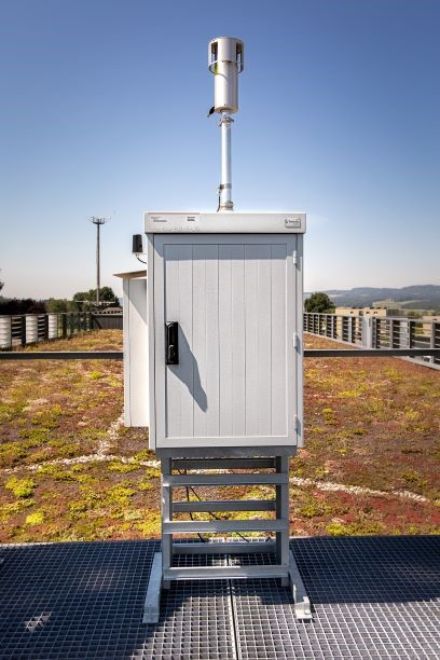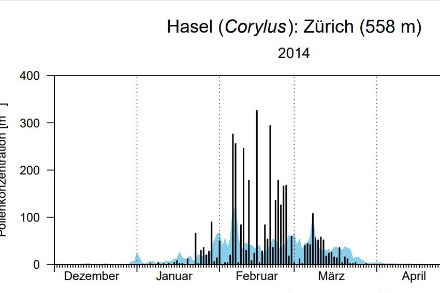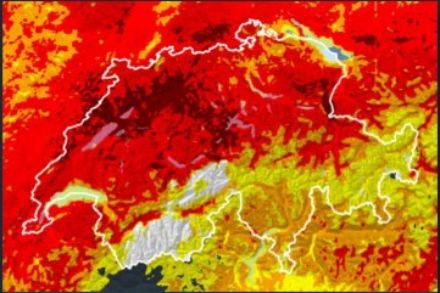Service Navigation
Search
The benefits of an automatic network

The data from the automatic stations has improved the quality of information available to allergy sufferers, medical practitioners, and for research. In particular, more accurate measurements available in real time are vital for more detailed and reliable forecasts. The integration of real time pollen data into the COSMO-1 weather forecast model was a key step in improving the information made available to the public. Allergy sufferers are now able to take preventive measures or treatments recommended by their doctor in a more timely way to avoid or reduce symptoms.
How do the automatic pollen measurements work?
The principle of operation: ambient air and all the particles it contains are sucked into the measurement system. Because of their size, pollen grains are concentrated and drawn into the measurement chamber where these particles are measured in flight using holographic techniques. Analysis of the data by an artificial intelligence algorithm provides information about the different types of pollen and their concentration in the air.
Thanks to these recent technological developments, which make feasible the counting and identification of a large number of particles very quickly, it is possible to study the hourly variability of airborne pollen concentrations. Identification of further particle types is also being developed: in addition to the main allergenic pollen, other aerosols will soon be able to be monitored, such as fungal spores responsible for allergies or crop diseases. This progress will help to strengthen partnerships with other fields such as air quality and health impacts.
More details can be found in the fact sheet (in German):
Presentation of hourly data
The Measurement values - Pollen application shows hourly data in real time for the main types of allergenic pollen and the various measuring stations. The other applications show pollen forecasts and daily measurement data in relation to an average pollen season.

